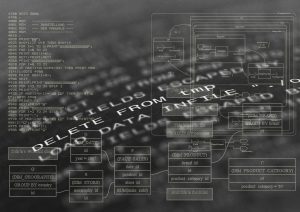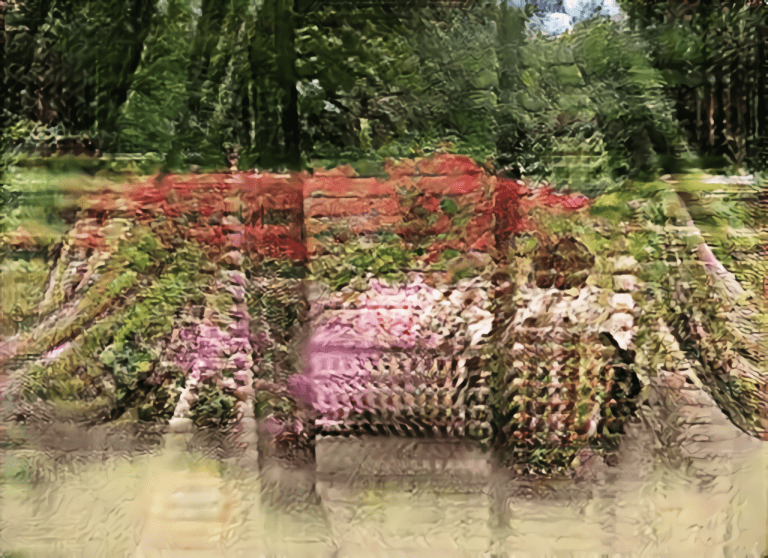Article
COVID-19 as a Biopolitics?: Between Digital Contagions & Social Complexity
Monologue:
Is COVID-19 simply about a biological pandemic?
If that is the case, shall COVID-19 be treated as a form of biopolitics, a social event that unravels some underlying problems in our society that were hidden (or covered up?) for so long?
The above questions are provocative, hoping to cast doubt and stimulate skeptic speculation. The response might be conditional, or perhaps controversial. Yet, the response should remain open-ended so that the questions can be appreciated.
Thus, it is not the intention of this writing to posit a fixed perspective in answering the questions nor to justify their validities. It rather sets to be a series of dialectical suggestions, either to be agreed or disagreed upon.
Multi-faceted facades
The complexity of its ontological relations thus makes the appearance of COVID-19 interconnected with an imbricated ‘outlook’. COVID-19 as such is a constellation…
- of biological virus, as endorsed by empirical scientists, virologists, and health bodies.
- of design idea, that inspires creativity for seeking solutions and innovating (new) things.
- of systemic disruptor, that reimagines the way education, occupation, communication, proxemic interaction, mobilization, and working activities (should) operate.
- of global culture, that pushes the traditional boundaries on economic capitalism, geopolitics, nationalism, social classes, individual rights, democracy, and populism!
- of political leverage, used as a dispositif for popularity, authority, privilege, and affluence?
The (dis)order
As a science of chaos, the existence of COVID-19 becomes polemic and problematic. Its order is fundamentally a disorder, pre- and post- determined by dispersal and distribution. Its certainty is flux and flow; of wave and transmission; of mutation and transformation. Nothing after all is absolute about the virus COVID-19…
A proposition
This writing is motivated from the sociological study of Shureen in highlighting the issue of comfortability among low-income citizens while coping with the government’s regulation on movement control order (MCO) for COVID-19 pandemic [1]Astro Awani. (2020, May 14). Sudah sampai masa kerajaan nilai semula rekabentuk PPR (It’s time for the government to reevaluate the design of PPR). Astro Awani.. As the citizens struggle to sustain their everyday life within a tight, confined space of their residential units, the study opens up a broad perspective about the issue of comfortability. Comfort is defined generally as a socio-psychological adaptation of one’s pleasure between the quality of indoor thermal, visual, and acoustic environments. Expanding this perspective, here I problematize the idea of comfort and COVID-19 virus within the issue of digitality and data culture of our contemporary life.
Digital contagions and social complexity
In the book Digital Contagions, the media theorist Jussi Parikka appropriates the polemic of computational technology with biological virus. Discussing the coupling between computerization and biology, Parikka writes:
As we know, these [computer virus and worm] are concepts that have become familiar through biology, where, for example, the virus has a history of its own. Related to the Latin word for a slimy, repulsive substance, poison, but also virility, viruses entered modern medicine and hygiene during the eighteenth and nineteenth centuries as minuscule, submicroscopic, infectious agents. “Virus” was actually at first only used to denote an X factor, the unknown cause. As a result of advances in the technologies of microscopes, filtering, and analysis, viruses were gradually identified as parasites of living organisms that themselves occupied a curious twilight zone between life and death with their singular structure of a protein cover over nucleic acid (genetic material). Viruses became key objects for twentieth-century biochemistry and genetics research, and they were informational before they became integrated into computer culture discourse. Computer viruses are often explained as if they were biological viruses. (2007: 92 – 93)
To talk of viruses, Parrika argues, is to talk of embodiment.
The continuous mechanistic process in maintaining the bodily compositions makes the idea of body as not solid, but rather fluid.
In this context, the embodiment of computing speaks of a constant battle using action and counteraction mechanisms in order to protect the computational network system against external threats.
The mechanisms reflect the fluid embodiment process as Parikka describes it as a ‘digital immunology’. He elaborates:
Within discourses of the immune system, bodies and boundaries are drawn with the aid of concepts of the normal and the pathological. The immune system is a program of territorialization that actively assigns elements to classes of self and other. It places and identifies objects on the scale of familiar or foreign, being more an active apparatus of selection than a merely passive surface of recognition. […] This is a model based not on representation but on an active creation of a territory (which is always in a potential state of becoming, of de- and reterritorialization). (2007: 127)
It is interesting to note how this conceptual idea has been visualized beautifully in the cinematic plot of Joseph Kosinski’s 2010 film Tron: Legacy. The film depicts the corporeal idea of computational virus and mutation within the space and time dimension of digital environment. The film’s imagination creatively exemplifies the idea of fluid embodiment.
This very idea of ‘digital contagions’ can be expanded to problematize our digital society lifestyle nowadays. Fundamentally, a society is established as a result of interactive communication. Within the realm of communication, the members of the society rely on ‘language-game’ interplay among them in order to manifest certain shared interests and consensus. As the saying goes, ‘No communication, no community’.
In the book A New Philosophy of Society, the philosopher Manuel DeLanda emphasizes the societal role of communication, of what he terms it as the ‘assemblage of conversation’. Speculating the issue of language and bodily presence in the establishment of society, DeLanda writes:
As an assemblage, a conversation possesses components performing both material and expressive roles. The main material component is co-presence: human bodies correctly assembled in space, close enough to hear each other and physically oriented towards one another. […] But technological inventions (such as telephones or computer networks) may make strict physical co-presence unnecessary, leading to the loss of some material components (spatial proximity), but adding others, the technological devices themselves as well as the infrastructure needed to link many such devices.
[2]54 DeLanda, M. (2006:53). A New Philosophy of Society: Assemblage Theory and Social Complexity. London: Continuum.
DeLanda’s statement is right in describing about today’s scenario by which the society is highly dependent on technological devices for practicing their assemblage of conversation. A conversation that is based on ‘bodily absence’ rather than physically presence.
COVID-19 pandemic clearly redefines the fundamental role of communication in our society today. Some established social communication concepts like Edward Hall’s proxemics, Erving Goffman’s dramaturgy, and Maslow’s need for self-actualization have been critically rethought simply due to the pandemic.
Post-truth
COVID-19 is a viral disease. Stories about COVID-19 are contagious, as it can easily go viral. Any sensational news related to COVID-19 tend to be the main headline. The viral stories then become a commodity as it fits within the economic supply-and-demand scheme of the media industry.
As a commodity, COVID-19 is wrapped as a valuable package to be sold in news and social media outlets. Its stories circulate; morph and cancerously spread in the vast infinite digital environment before being encountered by our human’s psyche and consciousness. Through language, we are aware of the unseen microscopic existence, there are also unseen by our limited naked eye.
Through language as well, COVID-19 turns to be a very susceptible viral data.
On one hand, the story of COVID-19 is beautifully presented with empirical statistics and graphs. While on the other hand, it is entangled with xenophobic sentiment, conspiracy theories, and social class prejudice. As such, the central rhetoric of COVID-19 becomes problematic and chaotic, which creates a confusion to decipher.
(Re)Covering Post-COVID-19 in the VUCA era
Perhaps after all, this is what it really means by living with the ‘new norms’ in this new VUCA era: where the environment is so volatile and complex, that there is nothing left for us, except to be adaptable with uncertainties and ambiguities…
References[+]
Images used in this articles
Image credit:
- Author’s own photos.
- Gerd Altmann. (2015, September 16). Program Computer Language Software [Illustration]. Pixabay.
- iira116. (2020, March 31). Coronavirus Stethoscope Disease [Photograph]. Pixabay.
- Mario Hagen. (2020, July 29). Person Suit Medical Protection [Photograph]. Pixabay.
- Micha. (2020, June 17). Virus Earth Corona World [Illustration]. Pixabay.
Other Articles
Collective Behaviour in the Time of Pandemic: Living Alone in Digital Dwelling by Nasir Baharuddin PreText The Covid-19 pandemic has caused many people to live in an ambiguous norm situation. People today are either searching to recover or are found to be recorded with uncertainty, while fitting the new norm of living amidst the pandemic […]
COMFORT (and the lack of it) FOR THE URBAN POOR DURING PANDEMIC by Nazrita Ibrahim On the 25th of January 2020, the first case of COVID-19 was detected in Malaysia by three Chinese nationals who have been in close contact with a positive COVID-19 patient in Singapore [1]“[Breaking] 3 coronavirus cases confirmed in Johor Baru,” […]
Presence with Absence: Anecdote on Non-Participatory Digital Participation in a Pandemic by Afdallyna Harun For most people, the sense of presence is a comforting percipience. Presence embodies the value of existence, occurrence, companionship, empowerment, and transformation [1]Dufva, T., & Dufva, M. (2019). Grasping the future of the digital society. Futures, 107, 17-28. in other words, it is […]
Behavior Analytics on Energy Consumptions by Puteri NE Nohuddin Space and behaviour are deemed to have a significant impact on how humans interact with their surroundings. Due to this, the Movement of Restriction Order (MCO) during the COVID-19 pandemic has ignite a great deal of public outrage and grievances. As a consequence, it has affected […]
COVID-19 as a Biopolitics?: Between Digital Contagions & Social Complexity by Mohd Shahrudin Abd Manan Monologue: Is COVID-19 simply about a biological pandemic? Or is it more than that: did COVID-19 turn out to be a Black Swan that disrupts our very fundamental societal structure? If that is the case, shall COVID-19 be treated as […]
COMFORT AMIDST CHAOS by Dr. Shureen Faris Abdul. Shukor Imagine sharing 650 square feet of living space with twelve other family members of three generations during a nationwide lockdown due to a pandemic. A single unit flat on the 11th floor of a 17-story housing block occupying a total of 2380 units. At any given […]
Collective Behaviour in the Time of Pandemic: Living Alone in Digital Dwelling by Hanif Baharin Introduction At the time of writing, Malaysia is in its third lockdown (also known as Movement Control Order 3.0 or MCO 3.0), to control the Covid-19 pandemic. A study conducted in April 2020 by Dr. Shureen Faris, shows that the […]












